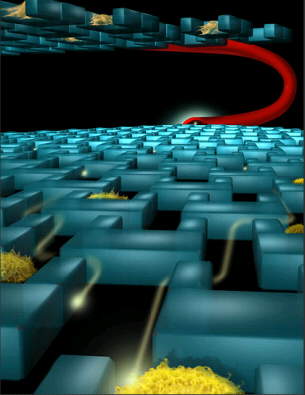Our brains contain their own navigation system much like satellite navigation (“sat-nav”), with in-built maps, grids and compasses, neuroscientist Dr Hugo Spiers told the BA Festival of Science at the University of Liverpool today.
The brain’s navigation mechanism resides in an area know as the hippocampus, which is responsible for learning and memory and famously shown to be different in London taxi drivers in a Wellcome Trust-funded study carried out by Professor Eleanor Maguire at UCL (University College London).
Continue reading “The ‘satellite navigation’ in our brains”




